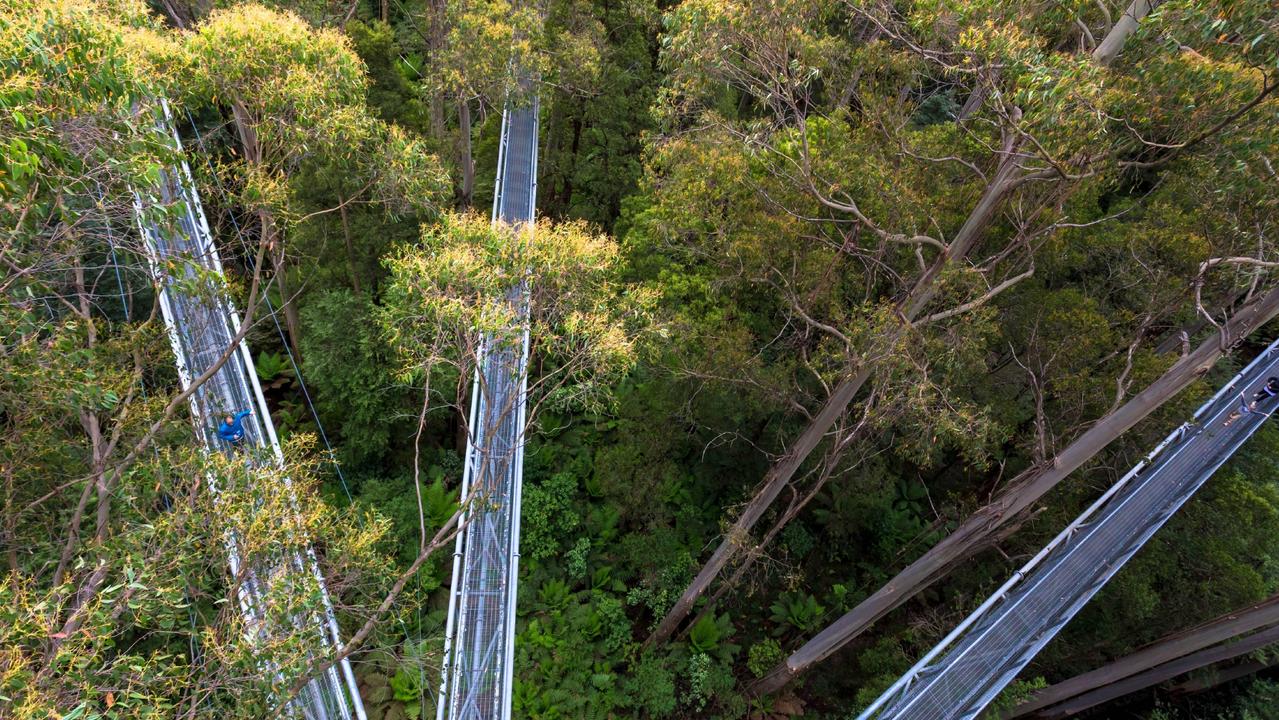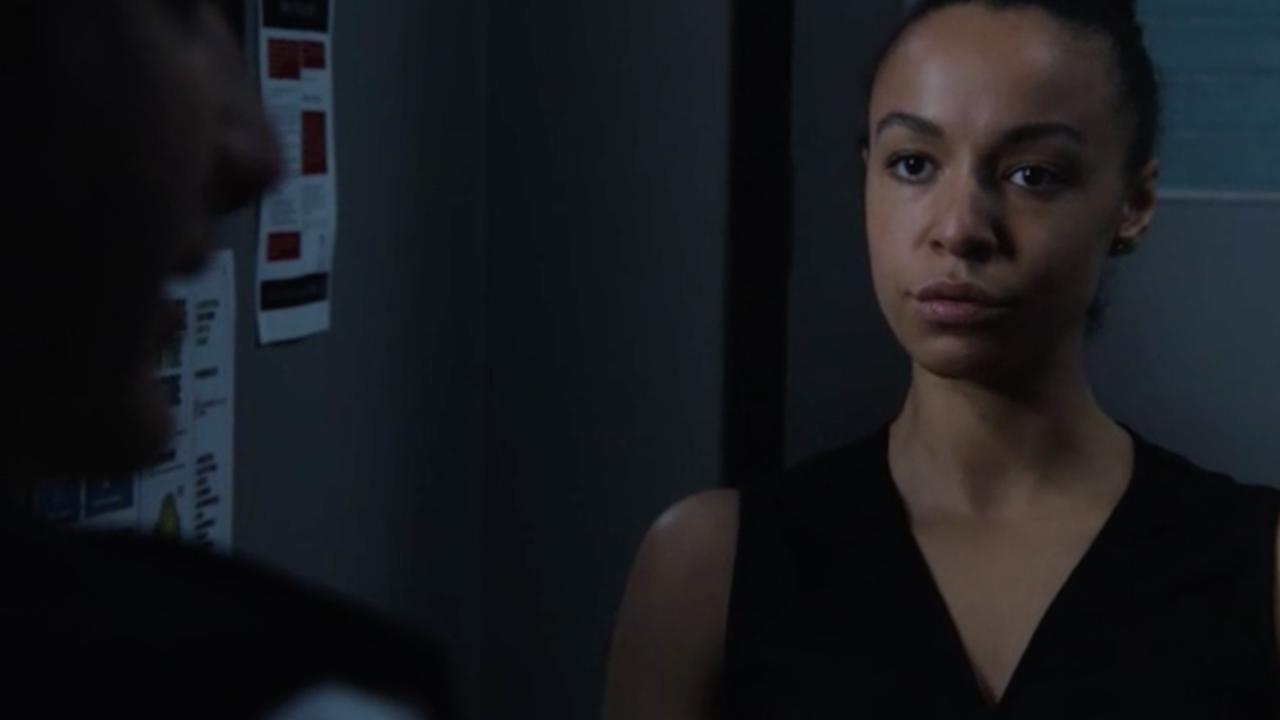Inside Museums Victoria’s hidden storage facility, the Moreland Annexe
TUCKED away in an unassuming warehouse in Melbourne’s northern suburbs sit some of Australia’s greatest historical treasures. We take you inside.
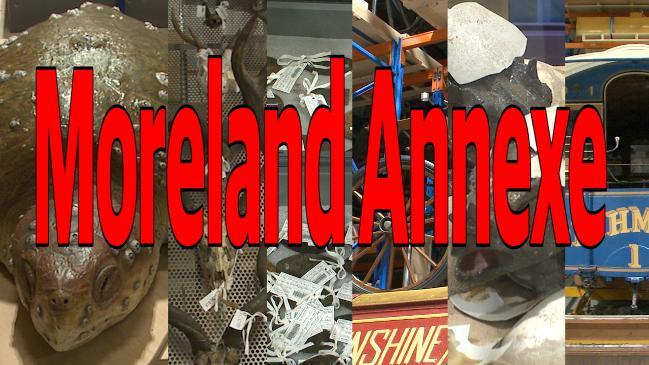
Best of Melbourne
Don't miss out on the headlines from Best of Melbourne. Followed categories will be added to My News.
NEVILLE Quick may just have the coolest job in all of Melbourne.
Ask any inquisitive child and they’ll almost certainly agree.
Every day Mr Quick has virtually unfettered access to arguably Victoria’s greatest collection of vintage cars, antique aircraft, dinosaur bones and other priceless objects.
Mr Quick runs Museums Victoria’s Moreland Annexe, an unassuming building in an unassuming suburb in Melbourne’s north, that happens to hold some of the country’s greatest historical assets.
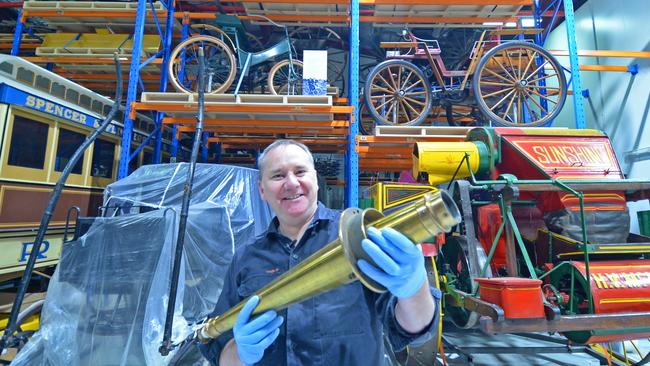
The first plane built and flown in Australia? That’s here.
It shares a bay with an early hang-glider, a couple of replica pterodactyls and some very early cars.
Across the way is a classic green and gold tram nestled next to a cast of a Tyrannosaurus Rex skull.
There’s the trunk of an ancient tree, Olympic bicycles and a very early form of technicolour rotary traffic light that once kept the good people of Brighton safe as they were chauffeured back to their beachside mansions.

The Moreland Annexe is a storage and preservation site for the museum that’s closed to the public.
Exhibits that aren’t on display are stored at the annex or facilities like it.
Museums Victoria has 15 million objects in its collection.
Only about two per cent is on display at any given time.
Every other item needs a home where it can be used for research and preserved for the future.
“They all need care because we want them to be around for the next 200 years,” Mr Quick explains.
“Our collection is like a giant 3D encyclopaedia and we can mine it for data, and we do it constantly.”
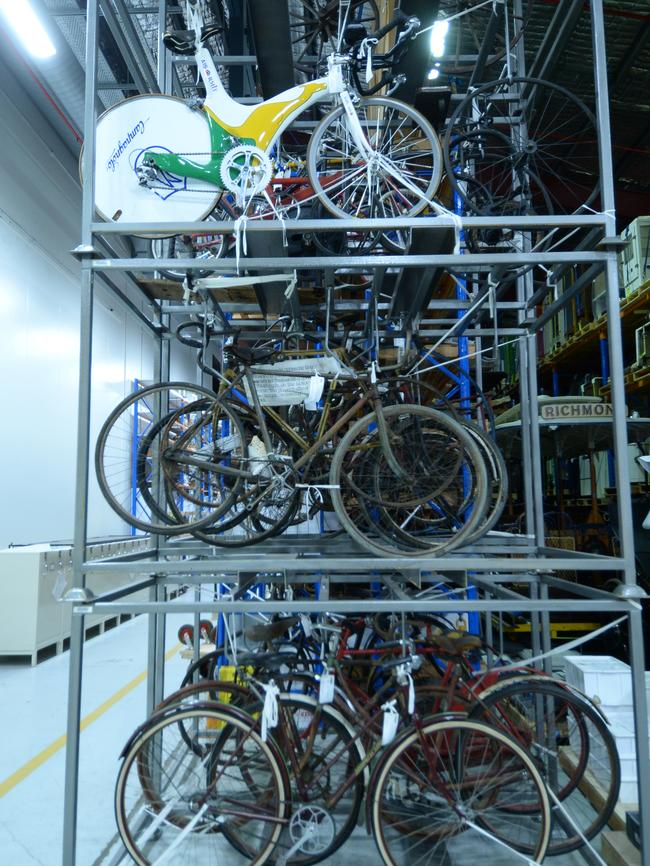

The Annexe was first used in 1997 and even though it cover 7500sq m space is increasingly at a premium.
“We built Moreland with capacity for 10 years’ growth,” Mr Quick said.
“We’re 21-years-old now.
“We’ve been able to maintain space for expansion to 21 years through clever use of space.
“It gets harder and harder with every object.”
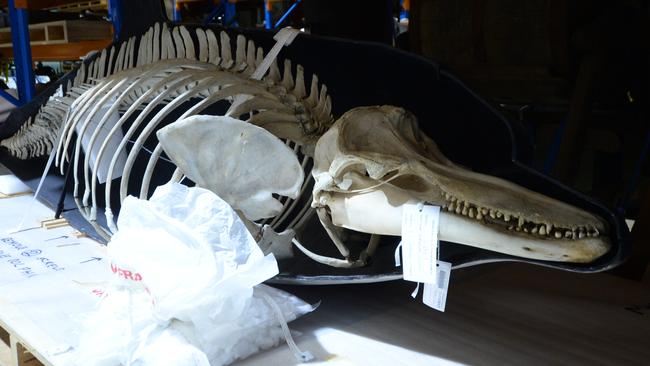
He walks us through a room of taxidermied animals.
Rows of skulls, bones and fur stand with that look of annoyance most stuffed animals have about being dead.
He tells us an object is nothing without its story.
And it soon becomes obvious he knows the story behind every one.
He lifts up a plastic covering over a collection of well-worn stuffed orang-utans.
It’s an “ape case” from the 1860s.
“Frederick McCoy, the museum’s first director used to stand in front of it and give public lectures in the hall of the old museum and he would debunk Darwin’s theory of evolution, which was the talk of the town,” he tells us.
“These specimens are very old now, so it really important from a natural sciences point of view but also really important from a social historic point of view.”
There’s no doubt museums have evolved too, from the traditional room of stuffed things and halls of dinosaur bones.

Hamish Palmer works with a team designing exhibitions.
He says that while storytelling has always been a part of the museum’s work, technology has changed how it’s done.
“It’s been evolving for a long time,” Mr Palmer said.
“Often what you encounter as a child, you may only see the big animals, but next to it will be a card that tells the story.
“It’s always been there but as we’ve learned about the different ways people learn.
“As technology has moved along you have different options to tell the story.”
Technology has also changed the way museum’s team find the objects they want to display.
“Most objects now have a barcode, and they’re all in a database, and it can tell you where they are and who has them booked in the future, so if you’ve got your eye on a polar bear for something for Scienceworks, you can see that no-one else has it,” Mr Palmer said.

Back at the Moreland Annexe, one polar bear that isn’t double-booked stares menacingly at the Herald Sun’s video guy from the back of a giant freezer.
It seems very much at home in its environment, but the bear isn’t there to feel comfy in the cold.
“We have a bloke on staff who’s our integrated pest management officer,” Mr Quick explains.
The staff member’s job is to set small traps to check for infestation. And if he finds one, he can’t just bust out the flyspray.
Instead, the team put the affected object in the freezer, where the -30C temperatures kill any bugs.
The Annexe is very particular about what chemicals might be flying around.
Even the paint on the floor is tested to make sure it doesn’t leach dangerous fumes.
Walking around, you forget that while the joint looks like a hardware store for priceless objects, it’s an incredibly controlled environment where nothing is picked up without gloves, and every object on every shelf is treated with reverence.
“We’re probably not the fastest forklift operators in Melbourne, but by gee, we’re probably the safest,” Mr Quick says.

